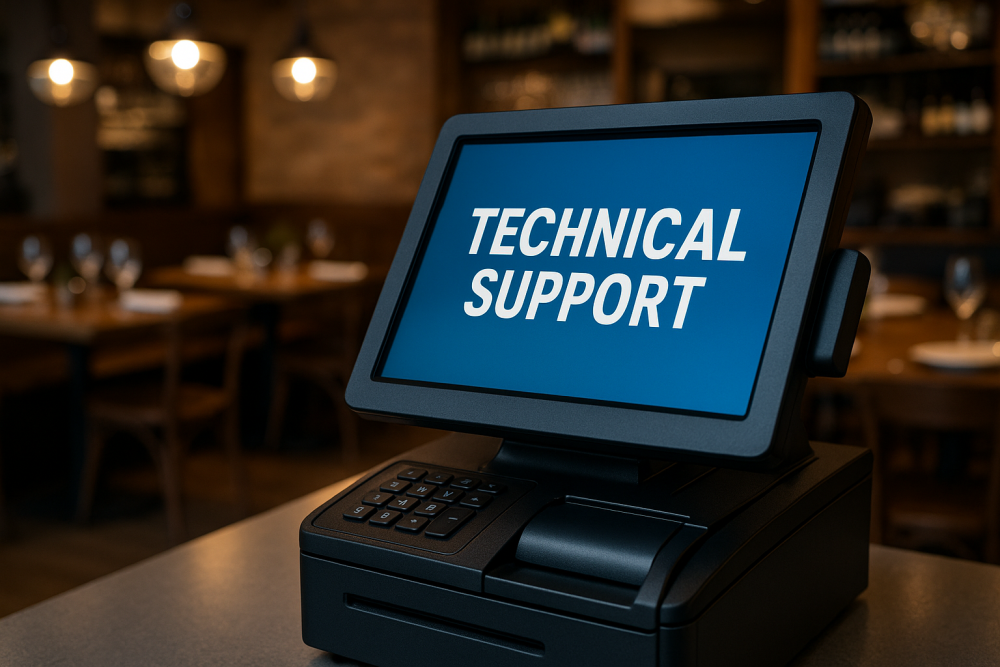



The Importance of Feedback in the Remote Workplace
May 30, 2024

Merriam Webster defines Feedback as “the transmission of evaluative or corrective information about an action, event, or process to the original or controlling source”. While this generally describes the act or intent of providing constructive feedback, it does not fully encapsulate the needs of the recipient, and the responsibility of the transmitter to provide accessible feedback that is both empathetic and actionable either for maintenance, or course correction. As it relates to a remote workplace, where body language, verbal tone, gestures, and physical presence are removed from feedback – the significance of accessible, supportive, and actionable feedback must be ever more the priority. The absence of appropriate feedback strategy ultimately culls our efforts to consider delivery, direction, organizational position, recipient learning style, and accessibility. Without considering these factors in our feedback in the remote workplace, retention suffers, team member morale dips, and we find ourselves in the deficit perspective.
What is the Deficit Perspective?
The Deficit Perspective is an idea commonly discussed in academia which asserts the belief that failure to accomplish tasks, achieve goals, or even retain employment is directly correlated to the lack of effort or shortcomings of the person rather than the institution or employer. Essentially, the deficit perspective says, “it’s your fault not mine”.
There are several negative consequences of falling into the deficit perspective in the workplace. Perhaps the most damaging consequences include (but are not limited to) creating false or biased standards for employees and team members, disregarding the learning needs of new or existing team member as they adjust to a role or increasing responsibilities, and disproportionate talent acquisition and talent termination practices. Perhaps the most egregious offense of the deficit perspective in the workplace is the illusion of perfection. Perfection does not exist in the workplace, nor will it ever be an attainable expectation for any employee. However, the deficit perspective perpetuates the idea that internal standardizations set for employee growth are immune to evaluation and scrutiny. More so, it delegitimizes any attempt at feedback or evaluation being a dialogic practice between the recipient and the transmitter. Without this reciprocity and introspection of one’s own processes and support systems – any feedback or evaluation that we provide our team members for course correction and affirmation becomes inaccurate and potentially baseless over time.

Why is Feedback in the Remote Workplace Important?
Feedback is crucial for the successful growth of any team member regardless of position or status in any workplace. Without dialogic, contextualized, and accessible feedback, we undercut more than our organization’s success; we undercut our own. In a remote workplace, it is even more crucial for feedback to be intentional, actionable, and accessible. For any remote organization, the first and most consistent barrier is a geographical one. With team members potentially across the globe that may have never seen each other in person, feedback is the most direct form of communication. It can provide professional closure, affirmation, and actionable steps for better working relationships and professional accomplishment.

What is the difference between Feedback and Compliments/Criticism?
Believe it or not, there are fundamental differences between feedback and compliments/criticism which can be simplified as such. Compliments such as “good job, nice work, great”, or criticism such as “this is not what I expected, this is horrible, I expected you to know this or disappointing”, and other adjectival words are missing context. What exactly was “good” or “bad” about the recipient’s work that warranted that response? Contextualizing feedback is essential for feedback to be dialogic. Through dialogue, we create a space for the recipient to acknowledge both praise and constructive commentary while also providing them an opportunity to evaluate what led them to success or what they should course correct. Furthermore, through dialogic transparency, organizational leadership (i.e., direct managers, leadership, or executive teams) can also begin their process for evaluating internal resources.
What is the connection between assessment and feedback?
In order to appropriately decide on what type of feedback or strategy for delivery would be most effective, we must first understand the relationship between assessment and feedback.
There are two main types of assessment:
- Formative Assessment, is a strategy meant to evaluate learning or progress during the moment of learning.
- Summative Assessment, is strategy meant to evaluate progress and learning after the moment of learning has passed.
Let’s look at a real-life example:
Imagine you are cooking your favorite meal – mine is spaghetti. If I am making my pasta sauce, tasting as I go and adjusting for taste, I am formatively making adjustments as I collect feedback. If I finish making the pasta sauce and decide that it needs a bit more salt and I season afterward, I have summatively made adjustments as I evaluate completed work.

In the workplace, formative and summative assessments appear in the form of performance review or general check-ins with your team or direct reports. However, the nature and timing of these formal or informal assessment periods can change the way we provide feedback. For example, formative assessment periods during project-based assignments or during sustained client support may warrant a strategy to correct or affirm decisions made for overall success in the moment. This is often based on departmental or role expectations, company policy, scope of work, and the experience of the transmitter providing feedback who may be a subject matter expert. This feedback is different from feedback that we would give once a project has been completed, or a final product has been reviewed. This type of feedback is more reflective in anticipation for the next project or similar circumstance; most often discussed during a performance review.
What are different types of feedback?
Typically in the workplace or in our personal lives we often receive feedback in the following formats:
1. Positive feedback: This can either be formative or summative which is meant to provide contextualized praise to the recipient. The key to this style is to provide the recipient with actionable feedback on how they can either sustain or optimize their approach to repeating the pattern of completion or success that contributed to the initial praise.
2. Negative feedback: This can either be formative or summative, but should always be contextualized and constructive. The key is to provide accessible, accurate feedback that allows the recipient to course correct so that a pattern of behavior can be correct and appropriate learning can take place. A common strategy associated with negative feedback is the Garrison Method, more commonly known as the sandwich method:

3. Positive feed-forward feedback: It is most often seen during summative assessments. Effective feedback of this kind hinges on linking the sender’s personal experience with positive acknowledgment on a shared topic as praise for the recipient in a similar situation. For example, during a formal performance review, a manager may provide praise to a team member for successful team collaboration on a cross-departmental project. While providing that positive feedback a manager may also share their own perspective predicated on their experience with other cross-departmental projects that may be beneficial to that team member as they continue to develop their skills.
4. Negative feedforward feedback: This style of feedback is most often seen during summative assessments. The key is to connect what could have been done differently at the end of an assignment, task or project with the transmitter’s experience. The purpose of this feedback is for the recipient to be better informed with resources, documentation, strategy, and opportunities for learning as they attempt to demonstrate overall improvement.
What are some challenges of providing accessible feedback in the remote workplace?
Aside from the accessibility, delivery, and intentionality of feedback from the transmitter, we may find ourselves facing other challenges as either transmitter or recipient. For example, since all interaction in the workplace is either through written communication or through video conferencing, the aftercare needed for both the transmitter and recipient feedback may not be so apparent. Therefore, it may lead to a feeling of isolation during or after feedback is provided. We often see this manifest in different ways. To better connect these challenges and ways that we can better navigate them toward healthy communication and aftercare, let’s talk about the Four Horsemen of Fixed Mindset.
Based on the work and research of American Psychologist, John M. Gottman – the Four Horseman of a Fixed Mindset postulates that in order to form healthy and accessible patterns of communication, we must first reframe our mindset to minimize criticism, contempt, defensiveness, and stonewalling. These emotions and responses can appear different when attempting to provide dialogic feedback, and can be amplified in a remote setting where we are not able to be physically present.
Here is how they can manifest:
1. Criticism – You’re Wrong, I Rule!

This can be apparent from both the transmitter and the recipient. When providing feedback from a position of power, managers may feel the need to showcase their feedback or experience as the only path. This perpetuates the idea that there is only one way to do something and removes consideration for how the recipient may process information or learn. Alternatively, this can also be present if the recipient is unable to either recognize or acknowledge feedback given. This is perhaps where the deficit perspective is most apparent. If the transmitter provides feedback and the response from the recipient is a non-response or a misunderstanding, it may be that the feedback accessible to the recipient.
2. Contempt – You’re Right, I Suck!

This is most often apparent in the recipient if feedback is either too harsh, without empathy, or without actionable suggestions for improvement.
3. Defensiveness – Blame it on the Rain.

This is often manifests from the recipient or transmitter during negative, or negative feed-forward feedback. Defensiveness during feedback can sometimes appear as placating responsibility or blaming other factors or even individuals as reasons why expectations were not met. This is another way the deficit perspective persists.
4. Stonewalling – Optimist without a Cause.

This often manifests from the recipient when constructive feedback is provided and most often appears as in-action or non-committal responses to actionable feedback provided.
Here is how we can start to address these challenges in the remote workplace:
- Criticism: As the transmitter for feedback, especially negative or negative feed-forward feedback, take an empathetic approach to your feedback. This should both challenge the recipient and also affirm their needs through actionable steps. The sandwich method is most effective here because it highlights success and accessibility, while also being mindful of the power dynamic between the transmitter and recipient.
- Contempt: As the transmitter, it is always important to convey appreciation for the recipient to be available and willing to receive feedback.
- Defensiveness: As either the transmitter or the recipient, identifying and reinforcing accountability, either through company policy or process documentation can streamline the effectiveness of developing learning strategies that can better support areas of improvement. This step is key to retaining the dialogic of feedback when defensiveness is present.
- Stonewalling: Feedback should always have follow-up. After any type of feedback is given, the transmitter should always either reinforce affirmations for positive feedback or share continued interventions during course correction. This increases the accessibility of intervention for the recipient, while also holding them accountable for their efforts to improve.
Advice for Improving Feedback Strategies
Feedback in the workplace can be challenging at times, but formatting is key to successful delivery!
Key things to focus on:
- Patterns or behaviors and not the individual.
- Observations and not inferences.
- Clarity and cohesiveness, not length of your feedback.
- Details and not the metaphors or hypotheticals that are irrelevant or non-applicable.
- The alternative and not on just the “right fit.”
- Flexibility and not on just on the absolutes.











Leave a Reply